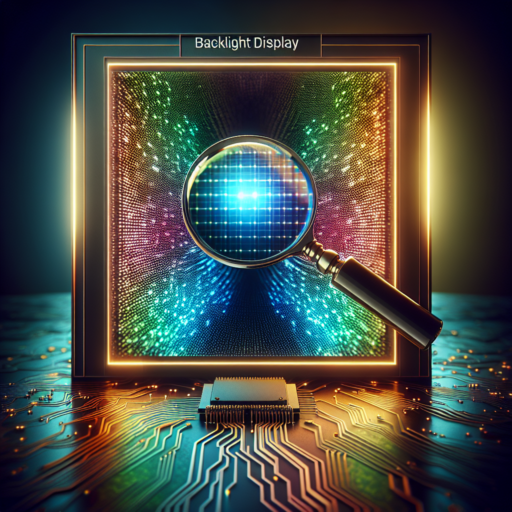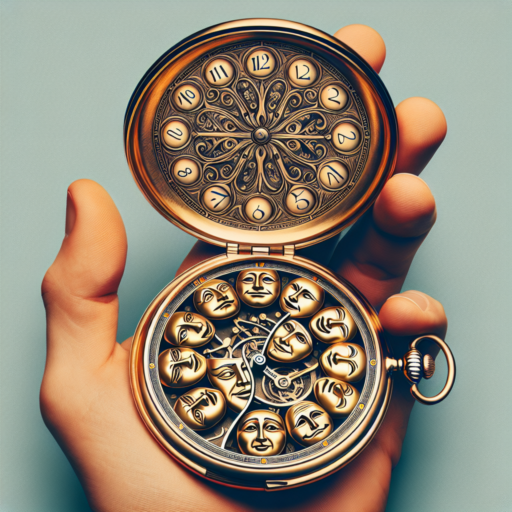What is a White Backlight and How Does it Work?
A white backlight refers to a lighting technology commonly used in various display screens, such as those found in smartphones, TVs, monitors, and more. Its primary function is to enhance visibility and clarity by illuminating the display from behind, thereby making the colors and images appear more vibrant and easier to see, regardless of the ambient light conditions. But how exactly does it achieve this?
At its core, a white backlight system comprises several components that work together seamlessly. The primary element is a light source, typically LEDs (Light Emitting Diodes) or CCFLs (Cold Cathode Fluorescent Lamps), that emits light uniformly across the display. Most modern devices prefer LEDs due to their energy efficiency, thinner design, and longer life span. This light is then diffused, usually by a specially designed panel, to ensure it spreads evenly across the entire screen, eliminating hotspots and shadows for a consistent viewing experience.
Operation of white backlighting involves an intricate balance between the light source, diffusion mechanism, and sometimes a reflector to minimize light loss. The goal is to provide an optimal brightness level that can be adjusted according to user preference or ambient light conditions. This adaptability is crucial for maintaining visual comfort and enhancing the overall user experience.
The Advantages of Using a White Backlight for Your Devices
Exploring the advantages of using a white backlight for your devices unveils an array of benefits directly impacting your daily user experience. Among these, perhaps the most notable is the significant improvement in display clarity. White backlights are adept at providing a crisp, clean illumination that enhances the visibility of on-screen content. This not only makes reading text more comfortable but also greatly improves the vibrancy and authenticity of colors presented, offering a more life-like viewing encounter.
Moreover, energy efficiency stands out as a pivotal advantage. Devices equipped with a white backlight tend to consume less power compared to those using colored or traditional backlighting solutions. This reduction in energy consumption is highly beneficial, extending the battery life of mobile devices and lowering electricity costs for powered electronics. The longevity of the backlight itself is also enhanced, offering a durable solution that withstands the test of time without compromising on performance or quality.
Lastly, the health benefits associated with using a white backlight cannot be overlooked. Unlike the harsh blues emitted by traditional backlights, a white backlight possesses a balanced spectrum, which is easier on the eyes. This can significantly reduce eye strain and fatigue, especially in scenarios where users are exposed to screens for extended periods. Furthermore, it contributes to improving sleep quality by minimizing the disruption of natural sleep cycles, making it an ideal choice for those sensitive to light before bedtime.
Top Devices with the Best White Backlight Features in 2023
In the vast ocean of electronic devices flooding the market in 2023, ones boasting the best white backlight features have surfaced as pivotal for users prioritizing visual clarity and aesthetic appeal. This chorus of gadgets spans across various categories, illuminating the path for both work and play with their enhanced visibility and eye-catching design elements. From the ultra-responsive keyboards tailored for the relentless typist to the sleek monitors that promise to be a treat for the eyes, white backlighting has become a symbol of sophistication and functionality.
Keyboards with Enhanced Visibility
Among the myriad of devices, keyboards with white backlighting stand out for offering superior visibility in low-light conditions, making them a favorite among gamers and professional typists. The gentle illumination not only accents each key with precision but also adds an element of elegance to the user’s workspace. Typing in dim environments is no longer a strain on the eyes, thanks to these innovatively designed keyboards that blend functionality with style.
Monitors That Protect Your Eyes
Another area where white backlight shines, quite literally, is in the realm of computer monitors. The best monitors of 2023 with white backlight features boast minimalist designs and are engineered to reduce eye strain. Through the implementation of cutting-edge technology, these monitors emit a soft glow that not only enhances the display’s contrast but also ensures that long hours in front of the screen do not translate into discomfort. For professionals and entertainment enthusiasts alike, these monitors represent a stunning blend of visual comfort and impeccable display quality.
As we traverse the landscape of electronics in 2023, the importance of white backlight features in devices cannot be overstated. Whether it’s navigating through a marathon coding session or binge-watching your favorite series, the soothing white backlight ensures your experience is both comfortable and visually stimulating.
How to Choose the Perfect White Backlight for Your Workspace
Choosing the perfect white backlight for your workspace is crucial for creating an environment that fosters productivity and minimizes strain on your eyes. The right kind of lighting can make all the difference in your comfort and performance levels over long periods.
Consider the Temperature of the White Light
White light comes in various temperatures, measured in Kelvin (K). Lights at the lower end of the scale, around 2500K, emit a warmer white, while those at higher temperatures, around 6500K, offer a cooler, more daylight-like appearance. For workspaces, a cool white light, typically between 4000K and 5000K, is often recommended as it closely mimics natural daylight and can help in reducing eye strain and maintaining focus.
Evaluate the Brightness Level
Brightness, measured in lumens, is another critical factor. A workspace requires adequate light to illuminate tasks without causing glare, which can lead to eye fatigue. The ideal lumen output for your workspace depends on its size and the natural light it receives. As a general guideline, a range between 3000 to 4000 lumens is considered sufficient for most workspaces. Remember, the ability to adjust the brightness of your backlight can further enhance your work experience by allowing you to tailor the lighting to different tasks and times of the day.
Finally, the longevity and energy efficiency of the backlight are also important considerations. LED backlights, for example, are not only more energy-efficient but also last longer than traditional lighting solutions, making them an eco-friendly and cost-effective option for your workspace.
No se han encontrado productos.
Comparing White Backlight vs. RGB Backlight: Which is Better?
When it comes to choosing the backlight type for keyboards, monitors, or any other devices that utilize illumination, the decision between white backlight and RGB (Red, Green, Blue) backlight can significantly impact user experience. The comparison isn’t just about aesthetics; it also touches on aspects of functionality, user preference, and the device’s environment of use. Understanding the strengths and limitations of each type can help in making an informed decision tailored to personal or professional needs.
White Backlight: Simplicity and Clarity
White backlights provide a clear, uniform illumination that enhances visibility without the distraction of colors. This simplicity can be particularly beneficial for users who require a clean and straightforward work environment. For instance, in professional settings or tasks that demand high levels of concentration and accuracy, the unchanging nature of white light can minimize eye strain and maintain focus. However, it’s worth noting that while white backlights offer superior readability, they may lack the dynamic edge and customization options that come with their RGB counterparts.
RGB Backlight: Customization and Atmosphere
An RGB backlight, with its vast spectrum of colors, opens up a myriad of customization options. This allows users not just to personalize their device’s appearance but also to create an ambiance that can enhance the overall computing experience. Whether it’s setting up mood lighting for gaming, coding with specific color cues, or simply matching the aesthetics of a workspace, RGB lighting offers a versatility that white backlights cannot match. The ability to adjust colors can also be leveraged to reduce eye fatigue by choosing hues that are softer on the eyes, particularly in low-light conditions.
Moreover, RGB backlighting has become synonymous with gaming and high-performance equipment, not only for the aesthetic appeal but also because it can indicate device status or alerts through color changes. This feature adds a layer of interaction and functionality, making the use of the device not just about the visual experience but also about practical utility. Nonetheless, the potential complexity and the often higher price point of RGB backlit devices are factors worth considering.
White Backlight Settings for Optimal Performance and Comfort
Adjusting the white backlight settings on your devices can significantly influence both your productivity and comfort levels. Whether you’re working long hours in front of a computer or enjoying some leisure time on your tablet, finding the right balance in backlight intensity and color temperature is crucial. This balance not only impacts your visual comfort but also affects your overall device experience.
Understanding the Basics: The concept of optimal performance and comfort when it comes to white backlight involves two main components – brightness and color temperature. Brightness should be adjusted according to the ambient light in your environment to avoid eye strain, whereas color temperature can affect your sleep patterns. A cooler (bluer) white light is beneficial during the day for its energizing effects, and a warmer (yellower) light is recommended for the evening to promote relaxation.
Best Practices for Adjusting White Backlight
- During the day, aim for a cooler color temperature to enhance concentration and focus.
- In the evening, switch to a warmer color temperature to minimize blue light exposure, which can interfere with sleep.
- Adjust the brightness level to match the surrounding lighting, reducing it in darker environments and increasing it in brighter settings.
Implementing these adjustments to your white backlight settings can substantially improve your experience, making your screen time more productive and less straining on your eyes. Personal preferences play a significant role, so experimenting with these settings is key to finding what works best for you.
DIY Tips: Installing and Customizing Your White Backlight
Installing and customizing a white backlight in your home or office space can transform the ambiance entirely, creating a modern, sleek look while providing adequate illumination. Whether it’s for your kitchen cabinets, workspace, or entertainment system, understanding the basics can empower you to do it yourself confidently.
Choosing the Right White Backlight
Firstly, it’s crucial to select the right type of white backlight for your project. You’ll find options like LED strips, neon flex, and under-cabinet lighting in various shades of white, ranging from warm white to cool white. Consider the area you’re lighting and the mood you want to create. For a more inviting, cozy atmosphere, go for a warm white. For a modern, clean appearance, cool white might be the best choice.
Installation Tips
Before starting the installation process, ensure you have all the necessary tools and components. This typically includes the lighting kit, a cutter for size adjustments, adhesive, and sometimes additional mounting clips or connectors for more complex setups. Always measure the area twice before cutting the strips to ensure a perfect fit. Cleaning the surface properly before attaching the adhesive backlights will guarantee they stick firmly and remain in place.
Customization and Control
Customizing your white backlight setup adds a personal touch and enhances the functionality. Use dimmers to control the brightness according to the time of day or the atmosphere you want to create. For LED strips, consider investing in a controller that allows you to adjust brightness, and in some cases, even the shade of white. Smart controllers offer the convenience of managing your lights via a smartphone app, providing flexibility to change the settings as needed.
The Future of White Backlight Technology: Trends and Predictions
White backlight technology has been at the core of various display devices, illuminating everything from smartphones to giant advertising billboards. As consumer demand for higher-quality displays continues to rise, the industry is equally pushing the boundaries of what’s possible with white backlight technology. This evolution is driven by the perpetual aim to achieve better energy efficiency, superior color accuracy, and enhanced overall performance.
Advancements in LED and Quantum Dot technology are among the most anticipated trends. LEDs have long been favored for their efficiency and longevity, but with the integration of Quantum Dot technology, we’re seeing a significant leap in color quality and brightness. This hybrid approach not only promises to deliver more vivid visuals but also aids in reducing power consumption, a critical factor in portable and eco-friendly devices.
In addition to technological improvements, there’s a growing trend toward customizable backlighting solutions. This flexibility enables manufacturers to tailor their products to meet specific consumer needs, ranging from professional-grade monitors that demand exceptional color accuracy to consumer electronics that prioritize energy efficiency and cost-effectiveness. With such developments, the future of white backlight technology looks more versatile and adaptive than ever before.




